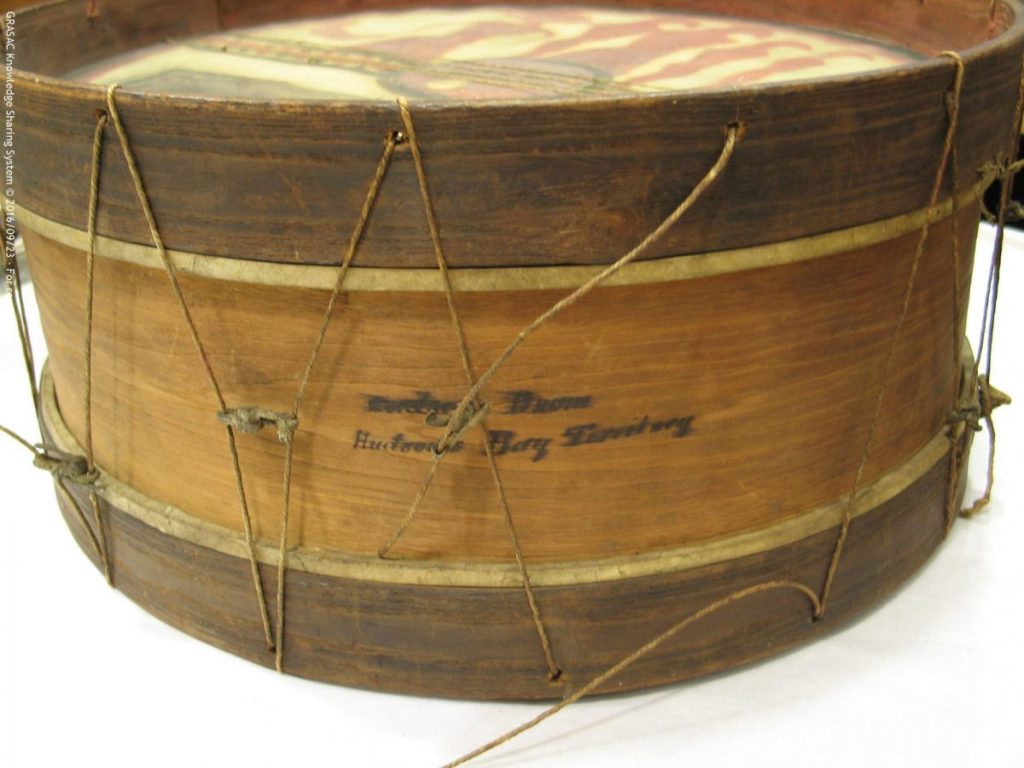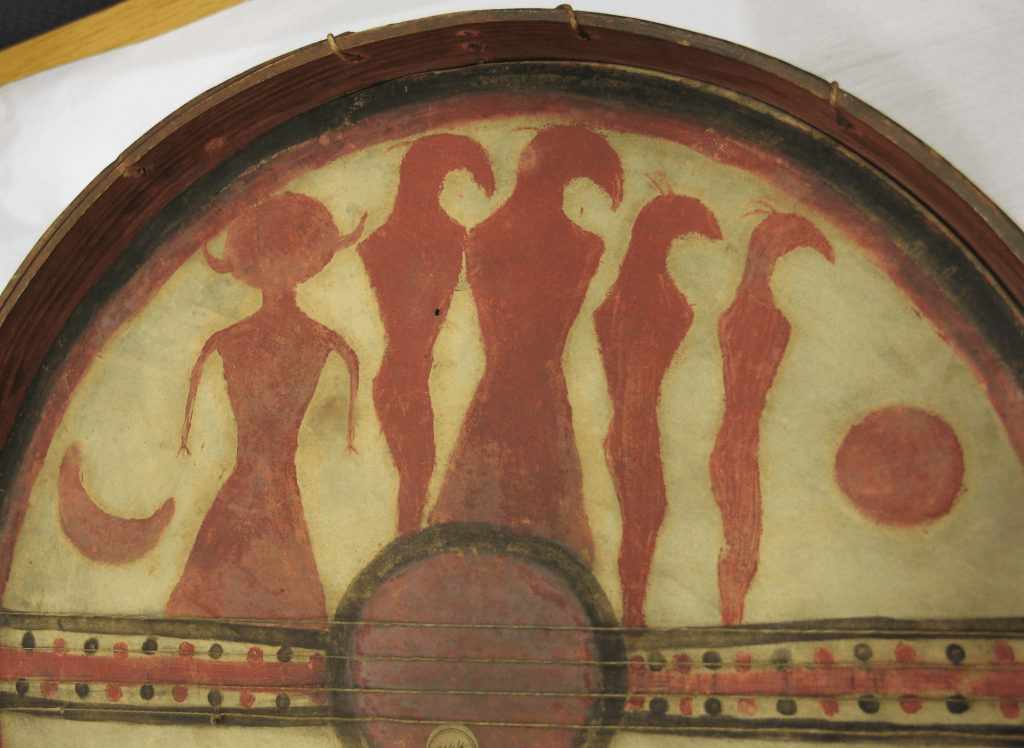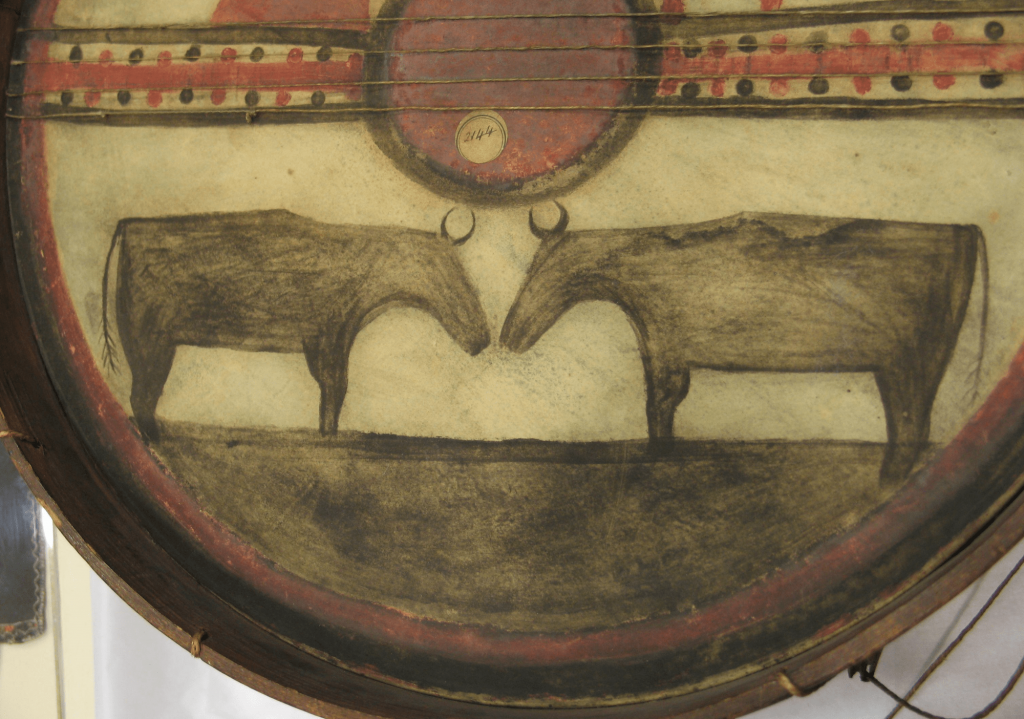A GRASAC Exhibit
Curated by Crystal Migwans
Photos courtesy of GRASAC & the British Museum (BM Am.2144)

1) British Military Drum
In terms of its form and origin, this drum is best described as a British military drum:
This modified British military drum shows how objects of European manufacture (such as blankets and medals) became aspects of Indigenous cultural identity. Drums were an important part of the marching bands of the British military, just as they were important to the war ceremonies of Great Lakes First Nations. Marching bands were considered essential to the discipline and morale of the troops, and were a common sight (and sound) in a British fort in nineteenth-century Canada, when this drum was collected by Henry Christy.

2) Diplomatic Gift
The history of this object is what makes it unique, because it passes from one culture to another as a diplomatic gift:
The British maintained a strong presence in Canada to protect their trade and colonial interests, and made treaties with First Nations to solidify their hold. To the Anishinaabe people, to whom this drum belonged, trade and military relations were an extension of reciprocal family relations: every member must be provided for equally, and every member must lend aid when necessary. Diplomatic gifts helped establish this relationship. Regular shows of generosity and esteem were necessary from both sides, and so the British gifted many military items to their Anishinaabe allies – firearms, medals, officers’ coats and more. This drum was likely part of a presentation of gifts, and represents the role of cultural exchange in Anishinaabe art.

3) Ceremonial Drum
The way this drum has been transformed suggests its social and spiritual use as a ceremonial drum:
This drum is probably the same one painted by Paul Kane on his trip to Manitoulin Island. This British drum resembles a type of drum constructed from a wooden frame with hide stretched over both surfaces, and would have been used by members a spiritual society such as the Midewiwin. Drums were central in the spiritual life of the Anishinaabe. The sound of the drum was meant to be heard as a heartbeat, and was a way to communicate with the spirit world. The images painted on the surface of the drum imbue it with spiritual significance and provide a clue to the way it was used in ceremony.

4) Anishinaabe Cosmos
The iconography of in the painted surface of this drum expresses spiritual themes, as a representation of the Anishinaabe cosmos:
The snare across the middle of the round drum has been interpreted by the artist as the horizon line, which divides sky from underworld in the circular Anishinaabe cosmos. The half-bird, half-human figures above the horizon are people transforming into thunderbirds. The figure to the left of the thunderbirds seems to be a horned woman, horns simply showed spiritual power. The figures below the horizon are underworld creatures, identified (by Ruth Phillips and Alan Corbiere) as the water or wood buffalo once native to the Great Lakes, who were said to know medicines by their roots. This painting speaks of knowledge of earthly medicines and gaining the power of thunderbirds.
